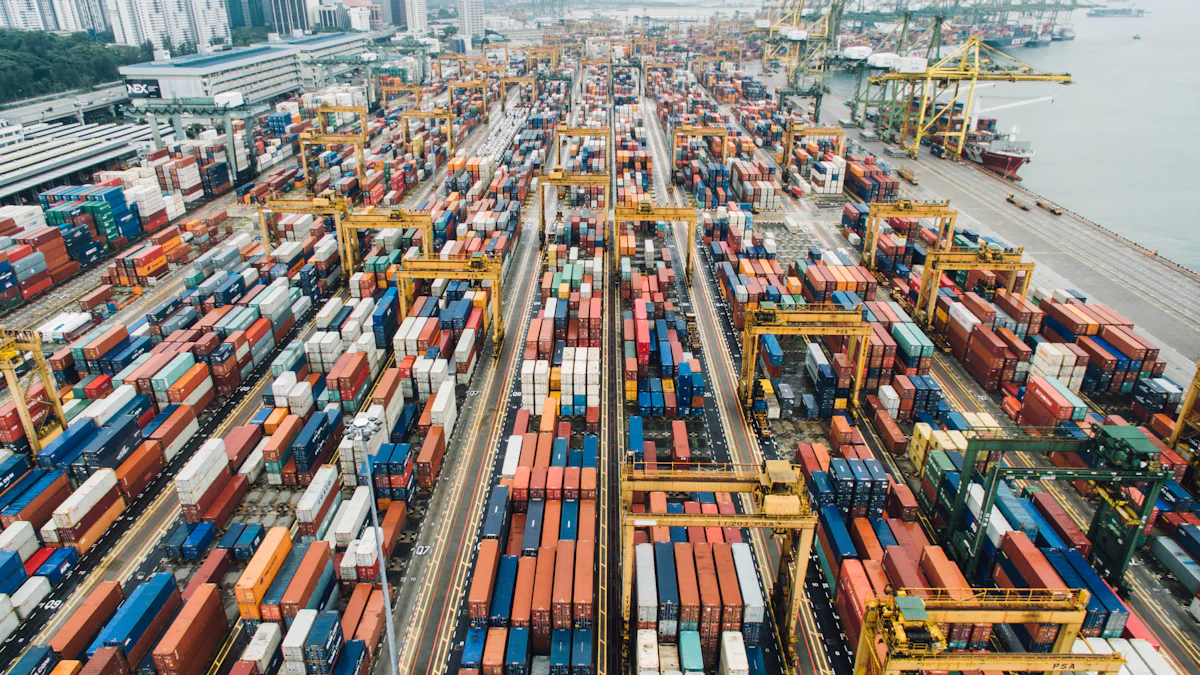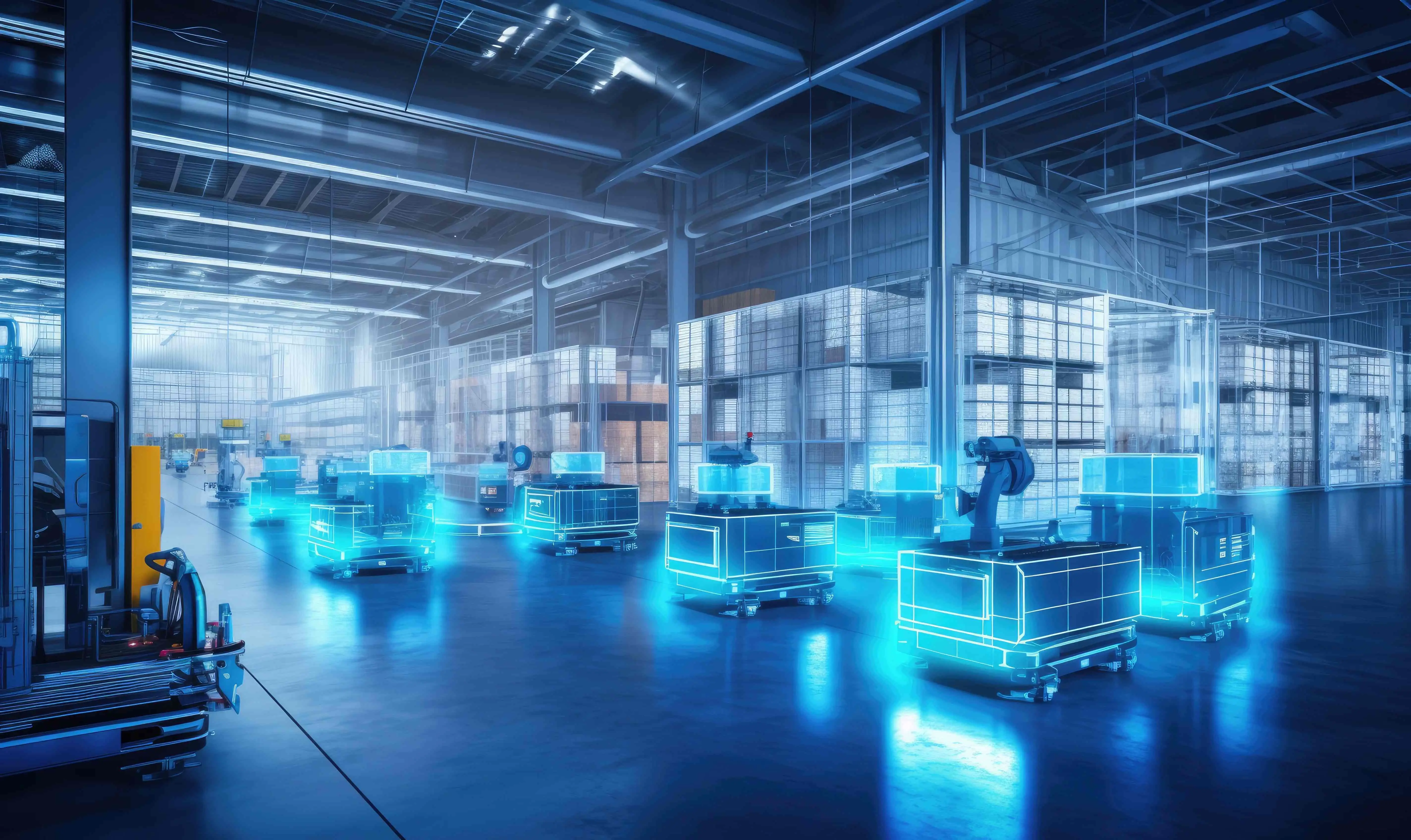Workforce Trends Shaping the Logistics Industry in 2025

The logistics industry is undergoing rapid transformation, driven by evolving workforce trends and technological advancements. Employees now expect flexible hours and remote work options, while employers face the challenge of preparing for disruption caused by automation and sustainability demands. As 2025 approaches, understanding future workplace trends becomes essential for navigating these changes effectively.
Key Takeaways
Use machines and learn new skills to succeed in logistics. Machines bring new jobs, especially for people ready to learn.
Focus on learning and training often. Helping workers grow boosts work quality and keeps them longer.
Try flexible work plans to make workers happy. Letting people work from home or choose hours attracts good workers and helps balance life.
Technological Integration and Automation in the Logistics Industry

AI and Robotics Transforming Job Opportunities
AI and robotics are reshaping the logistics and supply chain landscape, creating new opportunities for modern logistics professionals. Employers are increasingly adopting automation to enhance efficiency and reduce costs. For example, stacker cranes now handle storage tasks with greater accuracy, while automated guided vehicles (AGVs) streamline material transport. These innovations improve delivery speed and minimize errors. Automated systems also optimize order picking by bringing products directly to employees, saving time and boosting productivity.
The pandemic underscored the importance of logistics, driving demand for skilled professionals. As companies invest in digitalization, new roles emerge, requiring expertise in managing advanced systems. You can expect automation to create higher-paying technical positions, offering growth opportunities for employees willing to upskill.
Data Analytics Driving Workforce Decisions
Data analytics is revolutionizing workforce decisions in logistics and supply chain operations. Predictive analytics allows employers to anticipate disruptions and plan strategically. AI-driven insights optimize routes and inventory management, ensuring smoother operations. For instance, demand forecasting helps define risks and streamline workflows, enabling you to meet market needs effectively.
By 2025, data science methods will play a crucial role in setting realistic goals and improving decision-making. Modern logistics professionals who embrace these trends will gain a competitive edge. Employers must prioritize training employees to harness the full potential of data analytics.
Balancing Automation with Human Expertise in Logistics
Automation offers significant benefits, such as reducing operational costs by 15–25% through improved efficiency and lower fuel consumption. However, human expertise remains essential. Around 70% of fleet managers believe human intervention is critical for handling complex logistics scenarios. Automation should support, not replace, human judgment.
Employers must focus on preparing for disruption by integrating automation with human oversight. This balance ensures adaptability and resilience in the logistics industry. Employees skilled in both technical and problem-solving roles will thrive in this evolving environment.
Upskilling and Training for the Future of Logistics and Supply Chain
Bridging the Digital Skills Gap
The logistics and supply chain sector faces a critical digital skills gap in areas like AI, blockchain, and data literacy. Employers must address this gap to build a competent workforce capable of navigating future workplace trends. Enhanced training programs focusing on these technologies can prepare employees for disruption caused by automation. Governments and organizations worldwide are stepping up. For instance, India’s initiative to skill 2 million youth over five years highlights the importance of aligning training with industry needs.
You can also expect leadership skills, such as team management and constructive feedback, to become essential. Employers should prioritize upskilling programs that prepare employees for both technical and managerial roles. These efforts not only close the skills gap but also attract younger talent by presenting logistics careers as innovative and rewarding.
Industry-Academia Partnerships for Workforce Development
Collaboration between academia and the logistics industry plays a vital role in workforce development. Partnerships like the Logistics Sector Skill Council (LSSC) in India offer certification programs in warehousing and supply chain management. These programs help bridge the gap between education and industry needs. Workshops in colleges also raise awareness about career opportunities, ensuring a steady pipeline of skilled professionals.
Continuous Learning for Future Workplace Trends
Continuous learning is key to staying competitive in the logistics and supply chain field. Employers who invest in training see measurable benefits. For every dollar spent on training, companies gain $4.70 in productivity. Firms with strong learning cultures innovate 92% more effectively and retain 56% more talent. By fostering a culture of learning, you can ensure your workforce remains adaptable and engaged.
Flexible Work Models and Employee Well-being in Logistics

Remote Work and Hybrid Models in the Logistics Industry
The logistics industry has embraced remote work and hybrid models, reshaping how you approach job opportunities. The pandemic accelerated the demand for flexible work arrangements, allowing employees to enjoy reduced commuting and improved work-life balance. Hybrid models combine the benefits of remote work with the collaborative advantages of in-office settings. For example, a hybrid policy might designate specific days for remote work and others for team collaboration.
Touch-free technology has also expanded hybrid roles, enabling seamless operations in logistics. These trends align with employee expectations for flexibility while helping employers retain talent. However, challenges like maintaining team culture and scheduling meetings require careful planning. Employers must address these issues to ensure hybrid models succeed.
Flexible Hours and Work-Life Balance for Job Opportunities
Flexible hours empower you to structure your workday around personal needs, enhancing morale and engagement. Avoiding peak commuting times reduces stress and boosts daily focus. Employers who offer flexible hours demonstrate trust and respect, fostering a positive workplace culture.
Flexible scheduling improves work-life balance, a priority for modern logistics professionals. It also leads to higher job satisfaction and productivity. By meeting employee expectations for flexibility, employers can attract and retain top talent. A comprehensive benefits package that includes flexible hours further enhances job opportunities in the logistics industry.
Enhancing Workplace Safety and Mental Health Support
A safe working environment is essential for employee well-being. Poor mental health can lower productivity and increase accident risks. Employers can enhance workplace safety by providing mental health training and access to counseling services. Stress management programs help employees cope with challenges, while open discussions about mental health foster a supportive culture.
Regular assessments identify workplace stressors, allowing you to address them proactively. These strategies create a safe working environment where employees feel valued and supported. Prioritizing mental health and safety ensures a resilient workforce ready to meet future workplace trends.
Addressing Workforce Shortages in the Logistics Industry
Tackling the Aging Workforce Challenge
The logistics and supply chain sector faces a significant challenge with an aging workforce. Nearly 45% of employees in transportation and warehousing are 45 or older. This demographic shift creates a gap as fewer younger professionals enter the field. Many perceive a career in logistics as less appealing, which deters skilled candidates. This perception, combined with the growing complexity of logistics operations, risks understaffing in critical areas.
Employers must address this issue by creating programs that appeal to younger generations. Highlighting the benefits of a logistics career, such as growing job opportunities and competitive wages, can shift perceptions. Offering mentorship programs where experienced employees guide new hires can also bridge the generational gap. These strategies ensure a steady pipeline of talent while retaining institutional knowledge.
Strategies to Attract and Retain Young Talent
Attracting top talent requires a focus on employee satisfaction and engagement. Building strong interpersonal relationships within teams fosters loyalty. Recognizing employees' contributions and offering clear career progression opportunities make roles more appealing. Young professionals value purpose in their work. Employers who align roles with meaningful goals can enhance retention.
Providing flexible workplace policies and investing in training programs also attract younger candidates. These efforts not only improve employee satisfaction but also position the logistics industry as an innovative and rewarding field. By prioritizing these strategies, you can secure top talent and sustain growth.
Mitigating Driver Shortages with JUSDA ESG Solutions
Driver shortages remain one of the most pressing workforce issues in logistics and supply chain operations. Labor-intensive transportation roles face a 61% shortage, significantly impacting performance. JUSDA ESG offers innovative solutions to address this challenge. By leveraging advanced technologies like IoT and AI, JUSDA optimizes route planning and fleet management. These tools reduce workload and improve efficiency, making driving roles more manageable.
JUSDA also emphasizes sustainability, which appeals to younger employees seeking meaningful careers. Its focus on green logistics practices aligns with modern workplace trends. By integrating JUSDA ESG solutions, you can mitigate driver shortages while enhancing operational efficiency and sustainability.
Sustainability and Regulatory Compliance in Logistics and Supply Chain
Workforce Implications of Green Logistics Practices
Green logistics practices are transforming the logistics industry, creating new challenges and opportunities for employees and employers. Sustainability initiatives require a workforce skilled in eco-friendly practices, renewable energy, and sustainable transportation. Employees must adapt to higher safety standards while ensuring compliance with environmental policies. For example, emission caps demand expertise in reporting and adopting greener operations.
Employers must invest in robust training programs to help employees understand and implement these practices. Regular education reduces risks of penalties and operational delays. Technology integration also plays a vital role. Automated systems simplify compliance processes, allowing employees to focus on strategic tasks. By fostering a skilled workforce, you can meet sustainability goals and appeal to eco-conscious consumers.
Navigating Regulatory Changes with JUSDA ESG
Regulatory changes in 2025 will significantly impact the logistics workforce. The EU’s Emissions Trading System mandates that shipping companies offset 70% of their emissions. The Mediterranean’s designation as an Emission Control Area promotes low-sulfur fuel use. These changes require skilled employees to navigate complex compliance requirements.
Regulatory Change | Description |
|---|---|
Labour code compliance | Significant amendments including the right to disconnect, changes to unionized work environments, and new leave provisions are set to take effect in 2025. |
JUSDA ESG offers solutions to help employers adapt. Its advanced technologies, such as IoT and AI, streamline compliance processes. These tools enhance efficiency and ensure adherence to evolving regulations. By leveraging JUSDA ESG, you can maintain operational excellence while meeting regulatory demands.
Training Employees for Sustainable Supply Chain Operations
Training programs are essential for preparing employees to manage sustainable supply chains. Effective programs cover topics like ISO 20400 standards, ethical considerations, and ESG compliance. For example:
Training Program | Cost | Duration | Key Topics |
|---|---|---|---|
Embedding Sustainable Procurement | Free | 60 minutes | Sustainable procurement, ISO 20400 overview |
Sustainable Supply Chain Management | $1,710 (members), $2,050 (nonmembers) | 12 to 15 hours | Climate pledges, supply chain management strategies |
Building Sustainable Supply Chains Workshop | $1,997 | 3 weeks, 8 hours/week | ASCM Supply Chain Sustainability Standards, ethical considerations |
These programs equip employees with the skills needed to implement sustainable practices. Employers who prioritize training foster a workforce capable of driving innovation and meeting sustainability goals. By investing in education, you ensure your team remains competitive in a rapidly evolving workplace.

JUSDA Solutions
To provide you with professional solutions and quotations.
The logistics industry in 2025 will thrive on adaptability, innovation, and sustainability. Employers must embrace automation and reskilling to prepare employees for technology-driven roles. Training programs will ensure smooth transitions to automated processes, fostering innovation and adaptability. Sustainability efforts, such as adopting renewable energy and waste reduction strategies, will redefine workplace practices. By investing in flexible work models and continuous learning, employers can create a resilient workforce ready to meet future workplace trends. Companies like JUSDA lead this transformation with solutions like JUSDA ESG, ensuring operational excellence and sustainability.
See Also
Five Leading Logistics Programs To Explore In 2024
Five Key Trends Shaping Supply Chain Efficiency Ahead
Transforming Logistics: The Role Of AI In Supply Chains
Career Advancement Through The Future Of Supply Chains
Exploring Breakthroughs In Logistics Technology For Tomorrow
